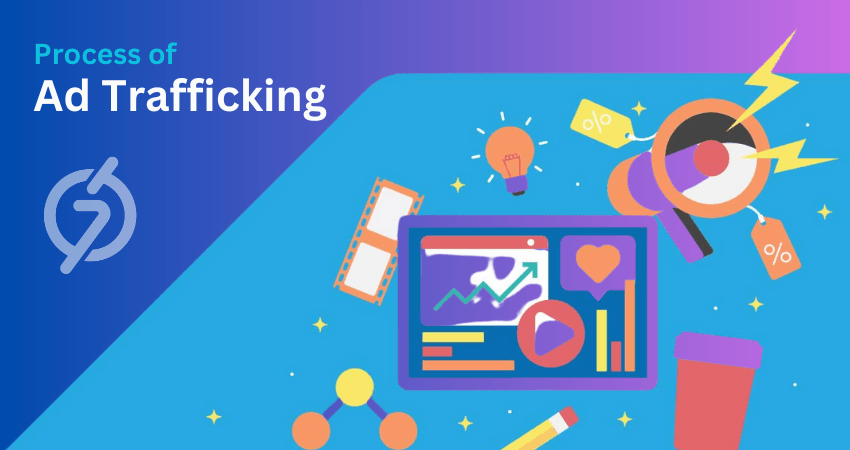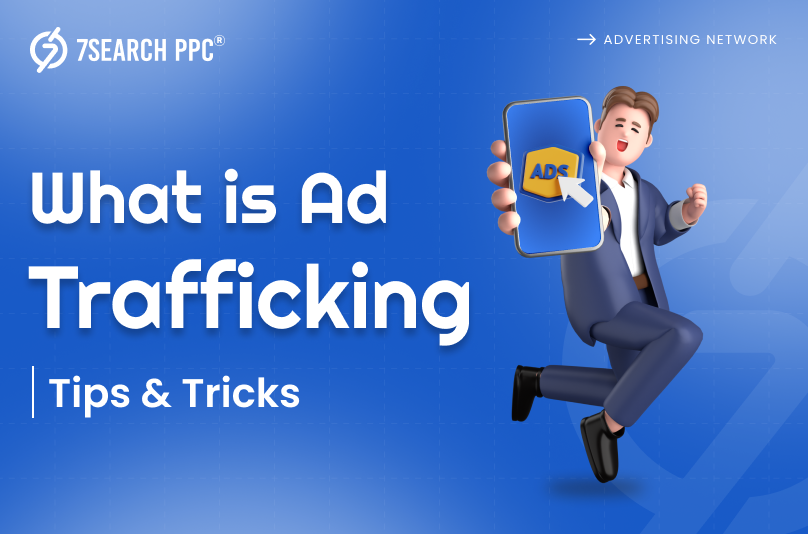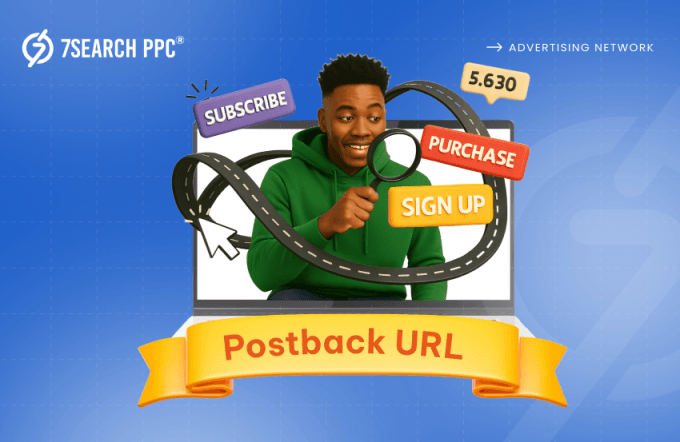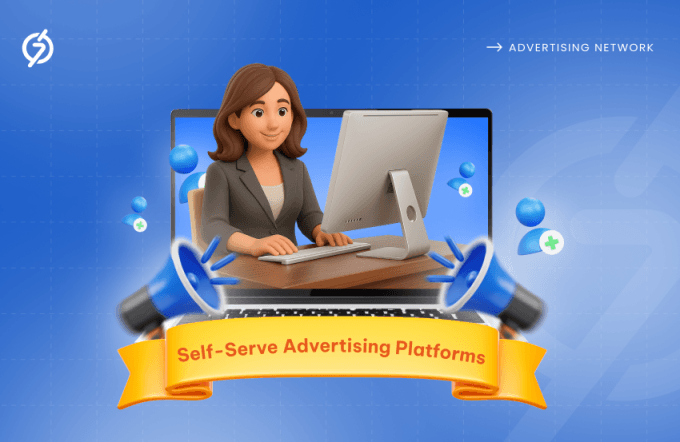Are you looking to understand Ad Trafficking? It’s very simple. Let’s take a scenario: You are a master chef, and your ad is the main course. To serve it up hot and fresh to hungry customers, you need a skilled waiter—that’s where ad trafficking takes charge. But it’s more than just serving; it’s about timing, precision, and the delivery of your digital ads.
It is the art of delivering your online ad to the right person at the right time and in the right place. This ensures your creative ads reach the consumer precisely when they are most receptive. When executed well, it can significantly boost the success of your ad campaign. However, if done poorly, it can lead to a waste of the ad budget.
So, grab a seat, take a break from your tasks, and read this blog, where we will discuss ad trafficking along with all the essential tips and tricks.
Ad Trafficking: The Backbone of Digital Advertising
Successful digital advertising requires a master plan and an effective approach. Your ads must speak to the intended audience about your brand’s offerings on behalf of you at the right time. To do this, you need to understand about ad trafficking.
It involves coordinating, optimizing, and managing ad campaigns to enhance their effectiveness. It combines marketing and technical strategies to increase brand visibility and drive more visitors to the advertiser’s landing page. This process includes creating and strategically placing various types of online advertisements, such as banner ads, native ads, or text ads (depending on the campaign’s goals).
The goal of ad trafficking is to maximize the reach of an ad campaign by carefully considering factors like:
- Audience Segmentation,
- Targeting
- Campaign Dates
- Ad Placement
This comprehensive approach ensures that the ad reaches its intended audience effectively and efficiently. You might now understand why we call ad trafficking the backbone of digital advertising.
Ad Trafficker: The Digital Ad Architect
An ad trafficker is a professional who handles and runs ad campaigns, typically using an ad network and ad server. They focus on optimizing the ad trafficking process to ensure campaigns get the highest number of clicks and impressions.
After receiving the ad creatives, their role comes into play. They set up the ad campaign by selecting the best strategies and configurations. Their main goal is to ensure online ads are delivered successfully and perform well, making them essential to the success of online advertising efforts.
The Importance of Ad Trafficking
Ad trafficking plays a crucial role in the digital advertising ecosystem (as we discussed earlier). It benefits advertisers and publishers by improving the effectiveness and efficiency of ad campaigns.
For advertisers, the main objective is to ensure that their ads reach a wide audience. Effective advertising trafficking helps achieve this by managing the placement, timing, and targeting of ads, maximizing their reach and impact.
On the other hand, Publishers want to make the most of their ad space to get the best results for themselves and their advertiser partners. Effective ad trafficking helps them decide where to place ads and manage their inventory, which improves earning from their advertising space.
Beyond these benefits, advertisers and publishers can gain additional advantages from utilizing ad trafficking. Some of these are outlined below.
For Advertisers:
- Maximized ROI: Ad trafficking ensures your ads reach the right people at the right time. This helps your ads perform better, reduces unnecessary spending, and improves your chances of getting more conversions. As a result, you get a better return on investment by using your advertising budget more efficiently.
- Effective Budget Management: By monitoring ad performance in real-time, advertising trafficking helps advertisers understand which ads are effective and which are not. This information lets them adjust their budget more wisely. It provides a clear hint to advertisers that they spend more on their ads that do well and less on those that are under-performing than expected.
- Campaign Optimization: Accurate traffic data helps advertisers identify which ads are connecting with their audience. This data empowers them to continually refine their strategies and targeting, improving campaign effectiveness by focusing on what delivers the best results. In this way, they can easily optimize their ad campaigns.
For Publishers:
- Improved Ad Experience: By controlling how often and where ads appear, trafficking helps prevent users from being bombarded with too many ads. This balance offers many benefits to publishers, such as:
- Improves the user experience,
- Reduces ad fatigue,
- Make sure ads positively contribute to the overall website or app.
- Accurate Reporting: Ad trafficking gives detailed reports on how ads are performing, including information on ad revenue, user engagement, and traffic patterns. This data helps publishers monitor their earnings, spot trends, and make smart choices to improve their future ad strategies.
- Enhanced Relationships with Advertisers: Consistent and efficient ad trafficking shows that a publisher is professional and dependable. Publishers build stronger relationships with advertisers by providing good ad placements and accurate performance data. It leads to lasting partnerships and repeat business.
The Process of Ad Trafficking
Ad trafficking is crucial in digital advertising, involving the setup, management, and optimization of ad campaigns. We already understand its meaning. Now, it’s important for you to know the process. Here is a brief overview:

Creative Process
The creative team is responsible for producing the creative elements of the campaign, such as images, copy, and other assets. Once these elements are finalized, they are either uploaded to the ad servers or sent to the media team for further action.
Media Management
After the creative assets are prepared, they are handed over to the media team, which is responsible for executing the campaign according to a predefined media strategy. This process involves several steps:
- Placement Setup: The media team sets up and organizes ad placements based on the media strategy.
- Campaign Launch: The campaign is pushed to the ad server along with the placements.
- Verification: The media team ensures that the campaign data and placements align with the trafficking instructions. Each ad placement is matched with the appropriate creative asset as per the guidelines.
- Handoff to Ad Operations: The media team provides the ad operations team with the trafficking guidelines and creative
Operational Procedure
The ad operations team then takes over, completing the trafficking instructions and generating the necessary tags. These tags are essential for integrating the ads into ad-buying platforms. The final steps include:
- Tag Generation: The ad operations team creates the tags required for the ads.
- Distribution: These tags are sent to media teams and publishers for integration.
- Activation: The campaign is activated across platforms as per the media strategy.
This collaborative effort between the creative teams, media operations team, and ad operations team ensures that a digital media campaign is effectively and efficiently trafficked, ready for activation, and aligned with the strategic objectives.
Essential Steps to Begin Ad Trafficking: Tips & Tricks
Starting with advertising trafficking involves several key steps to ensure successful campaign management and optimal traffic. Here is a structured approach:
Act Like an Advertiser
As an advertising trafficker, you must start by adopting an advertiser’s perspective to choose ad formats likely to boost engagement. Finalize these formats early and discuss the CPM process and ad placements to ensure clarity. This step helps the advertiser set a budget and define the campaign’s direction.
Establish a clear budget based on the chosen formats and placements. Finally, integrate the test key elements to enhance click-through rates and optimize ad performance. Following these steps ensures a streamlined process and aligns the campaign with the advertiser’s goals.
Keep Monitoring
The next step is understanding the importance of monitoring and maintaining records. Maintain accurate records of ad placements, instructions, and performance metrics to facilitate smooth management and reporting. Regularly monitor and optimize campaigns based on real-time data to enhance performance.
Stay in communication with advertisers to ensure their requirements are met and address any issues promptly. Prepare to defend your results with detailed documentation and use insights from past campaigns to continually refine your strategies and adapt to evolving advertising trends.
Focus on the Elements of an Ad
So, what after the monitoring? Clear communication with your advertiser about the multifaceted nature of ad performance is necessary. Recognize that successful ad campaigns depend on various elements, such as:
- Ad Design
- Ad Placement
- Media Type
You are not responsible for the overall ad campaign performance. It is crucial to highlight the importance of high-quality creative work, as low-quality creativity can impede the success of an ad. It’s important to keep an open dialogue with your advertiser and creative team to tackle any issues and make the necessary adjustments to optimize the ad’s performance. Collaborative efforts between you, the advertiser, and the creative team are vital for maximizing ad effectiveness.
Stay Informed
The last step is to master the fundamentals of advertising and programmatic technology, and there is a reason behind that. We all know that programmatic advertising is known for its technological advancements. You need to stay updated with the latest advancements by attending digital seminars and engaging with industry news.
Networking with peers through social media and professional platforms will help you stay informed and gain valuable insights. Collaborate closely with creative professionals like designers and copywriters to incorporate their insights into your campaigns.
This proactive approach will ensure you manage and optimize ad campaigns with confidence.
Conclusion
Ad trafficking is often overlooked but plays a crucial role in making digital advertising campaigns successful. By learning how it works and using the tips provided, you can improve your ad operations. It’s not just about showing ads; it’s about making a real impact. A good ad trafficker works closely with advertisers and the creative team to reach campaign goals. Keep up with industry changes, watch your campaigns closely, and communicate well to stay ahead. With attention to detail and a focus on optimization, you can excel in ad trafficking and achieve great results.
Frequently Asked Questions (FAQs)
What is Ad Trafficking?
Ans. It is like an assistant for your online ads. It’s about getting your ad to the right person at the right time and in the right place.
Why is Ad Trafficking important?
Ans. It is important because it helps your ads reach the right people, which means more people will engage with your ad and hopefully click on it.
How does Ad Trafficking benefit advertisers?
Ans. It helps advertisers by making sure their ads are shown to the right people, which saves money and gives them a better return on their investment.
How does Ad Trafficking benefit publishers?
Ans. It helps publishers by making sure they get the most money from their ad space and keeping their website visitors happy.
How can I become an Ad Trafficker?
Ans. To become an ad trafficker, you need to learn about digital advertising, ad servers, and how to analyze data.


















